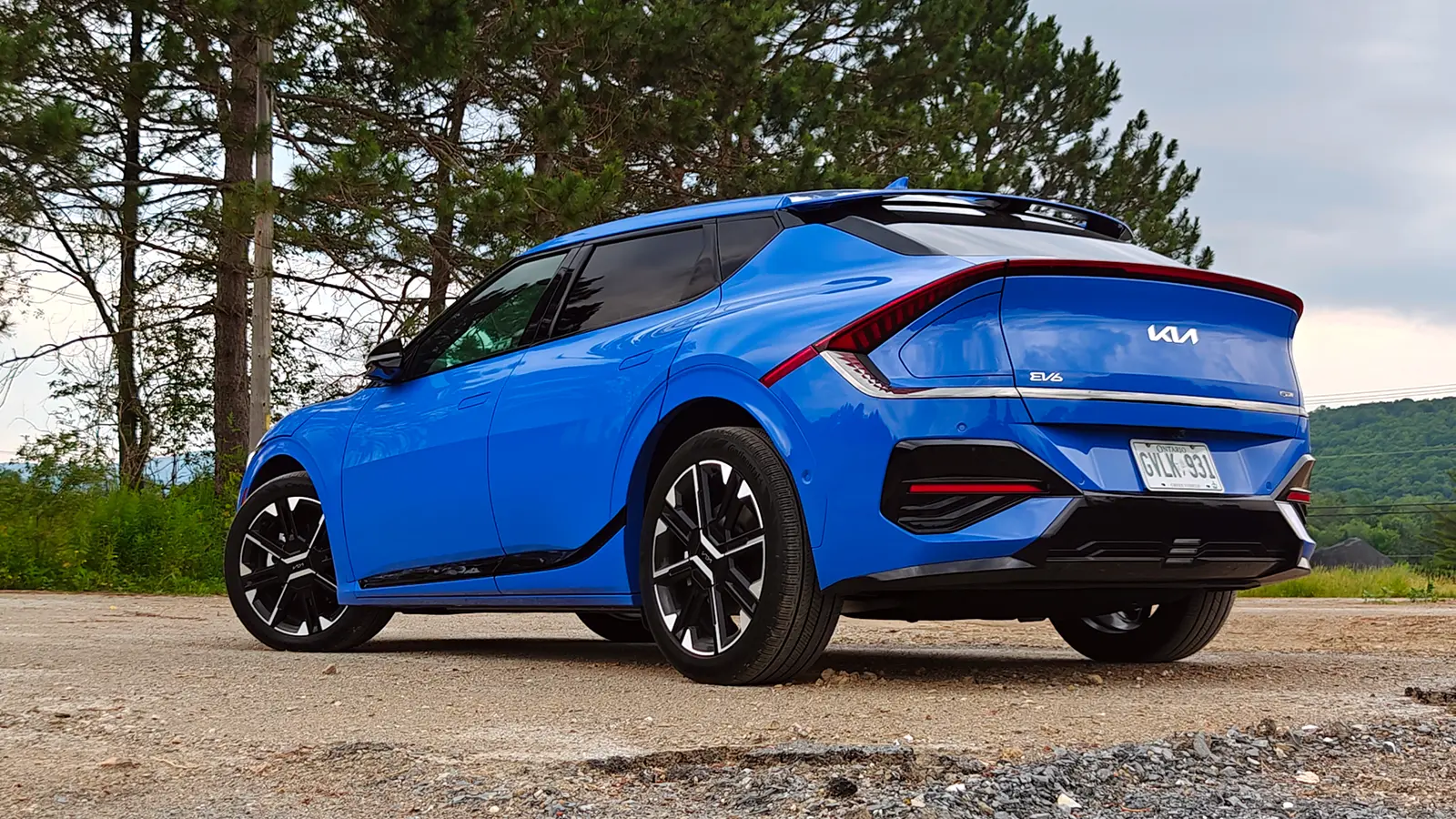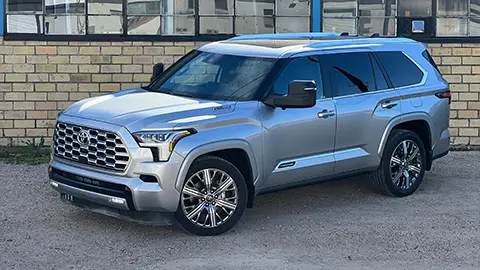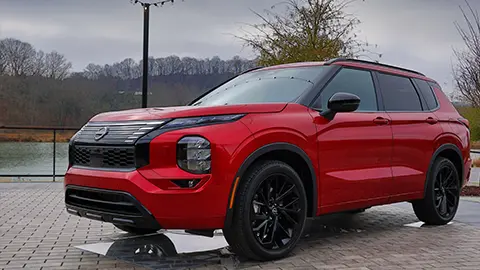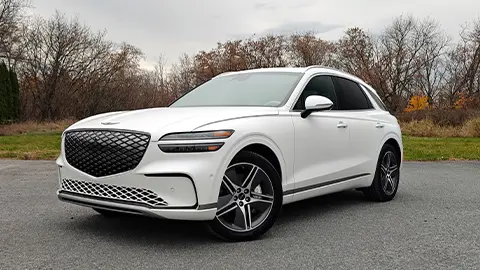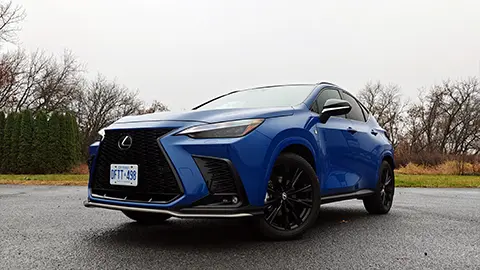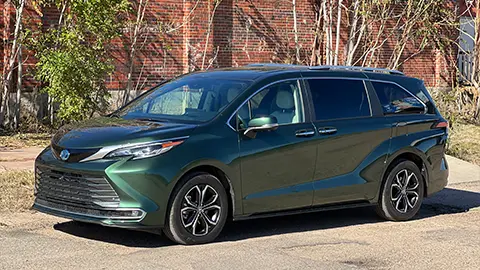New Looks and More Range
With the Kia EV6's wagon-like stance and all-electric drivetrain, it's an intriguing alternative to traditional SUV rivals. The crossover, which got a facelift for the 2025 model year, boasts extremely quick charging speeds, an above-average driving experience, and good driving range, at a reasonable price.
We had a chance to drive the GT-Line All-Wheel-Drive (AWD) model to see how the updated EV6 stacks up.
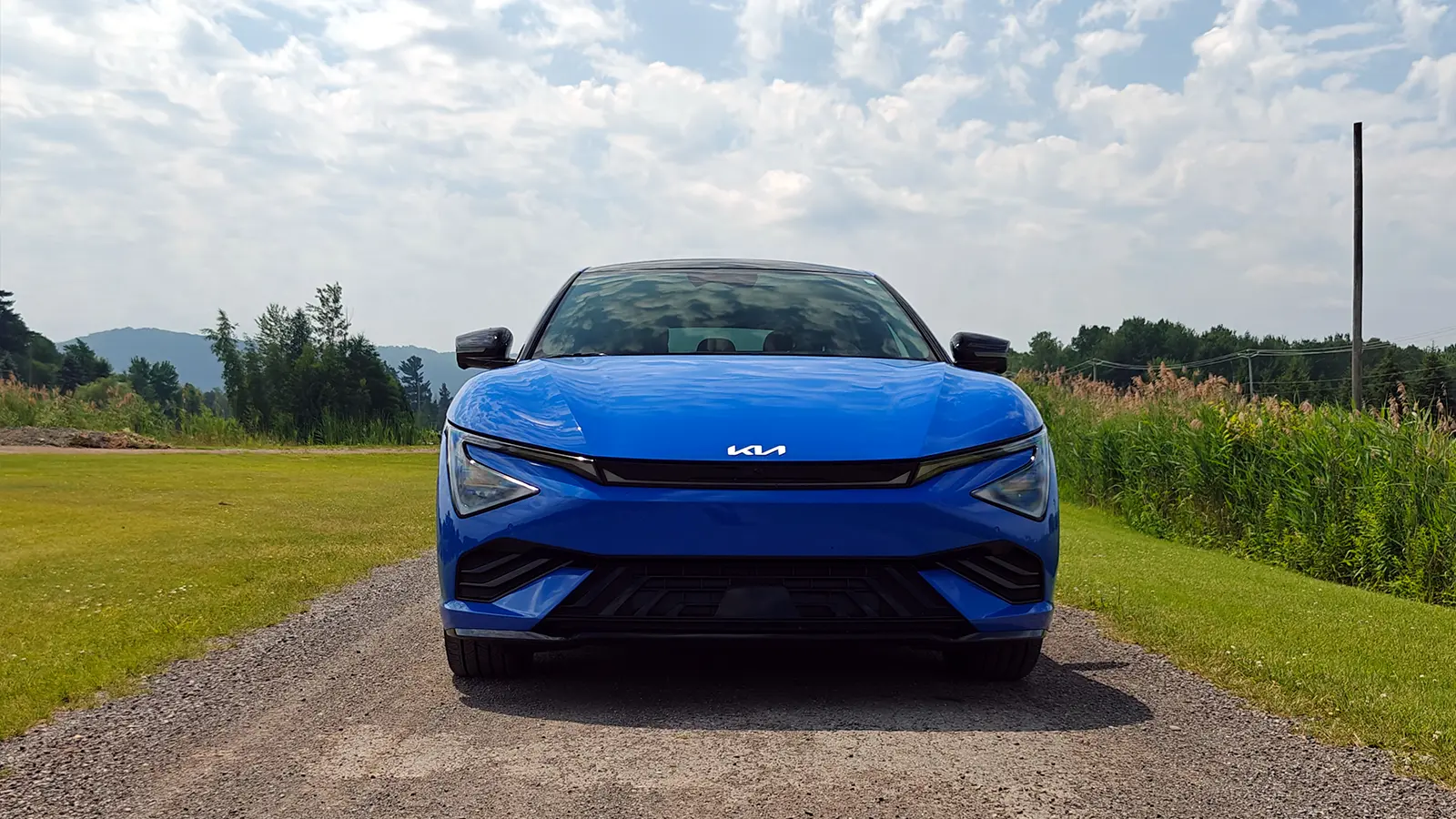
What’s New for 2025?
For its first major redesign since hitting the market roughly four years ago, the 2025 Kia EV6 sees mostly cosmetic updates. A new front and rear bumper design, revised lighting, and updated wheels give it a fresh look while retaining the same shape as the previous model. Inside, the infotainment screen is now part of a unified curved display, and updated software keeps the interface modern.
New to electrification? Start here with our foundational guide: GreenCars 101
The more interesting updates are on the technology front. Kia has increased battery capacity across the lineup. Entry-level Light Rear-Wheel-Drive (RWD) models now get a 63-kilowatt-hour battery (up from 58), while the rest of the lineup receives an 84-kWh pack (up from 77.4). These updated battery sizes boost range across the lineup, but we'll get into that shortly.
More Charging Access
One of the most notable upgrades for 2025 is a switch from the CCS plug to the North American Charging Standard (NACS). This means the EV6 can now easily use Tesla Supercharger stations, though the EV6 retains CCS compatibility by way of an adapter. Tapping into the Supercharger network is great news for road trippers or those who don’t charge at home, as Tesla's network is by far the largest in the U.S.
However, the change isn't without its quirks. If you’re one of the thousands who already installed a non-Tesla Level 2 charger at home, you’ll be fumbling with an adapter every single day. Additionally, if you want to use a non-Tesla DC fast-charger, that now also requires a second, separate adapter. There's no one-size-fits-all solution that simplifies charging across every format.
There’s one more caveat to keep in mind. The EV6 runs on an 800-volt electrical architecture, which allows it to charge rapidly; up to 240 kilowatts when connected to a 350-kW CCS DC Fast-Charger in the right conditions. That means it can go from 10 percent to 80 percent charged in about 20 minutes. It also lets Kia keep the charging amps low, reducing the heat that the process produces.
Not sure which green vehicle fits your needs best? Our EV Comparison Guide breaks down top models by price, range, charging time, and more.
✅ Quick Takeaways:
- Range: Up to 319 miles EPA estimated (RWD models)
- Charging: 10-80% in 20 minutes (350-kW DC Fast Charger)
- Power: 167 to 641 horsepower across trims
- Technology: Dual 12.3-inch screens, now with Tesla Supercharger (NACS) access
- Pricing: Starts at $44,375 MSRP; GT model priced at $65,275 MSRP
However, Tesla Superchargers are rated for different maximum charging speeds depending on the version of the chargers. V3 and V4 Superchargers are generally rated for up to 250 kW. Some older Superchargers are rated for 150 kW. But all are optimized for 400-volt systems. Tesla chargers rely on delivering high amperage rather than high voltage to top up quickly. As a result, the EV6's charging speed is stuck at around 125 kW when connected to a Tesla Supercharger, even if the station, and the Kia, support faster charging speeds.
It's a tradeoff. Having a NACS port opens up a wider range of charging options, but a mismatch between the vehicle architecture and some DC Fast-Chargers limits an SUV whose point of pride is shorter plug times.
Same Performance but More Range
The new Kia EV6 keeps its existing lineup of powertrain configurations. The Light RWD models come with a single electric motor that sends 167 horsepower and 258 pound-feet of torque to the rear wheels. Other single-motor trims, the Light Long Range RWD, Wind RWD, and GT-Line RWD, maintain that torque figure while boosting horsepower to 225 ponies.
Dual-motor AWD versions, the Light Long Range AWD, Wind AWD, and GT-Line AWD, feature 320 horsepower and 446 lb-ft of torque, giving them a considerable performance advantage. Expect a 0-60 time of 5 seconds in these models, compared to 7.3 seconds in 225-hp cars, and 8.3 seconds in the weakest of the bunch, the Light RWD. All-out speed fiends will want to spend big on the EV6 GT, which pushes its dual electric motor to a maximum of 641 horsepower and 568 pound-feet of torque. That’s enough push to hit 60 mph in a startling 3.6 seconds.
The EV6’s increase in battery size pays range dividends across the lineup. Even the Light RWD, which has the smallest power pack in the bunch, has an EPA certified 237 miles of driving range. If long-distance driving is your primary concern, you’ll want to target any of the other RWD trim levels, which pump that figure up to an impressive 319 miles. Adding AWD drops range to 295 EPA estimated miles for models outfitted with 19-inch rims, and 270 EPA estimated miles for the GT-Line, which rides on 20-inchers. The GT makes the most significant sacrifice in driving distance for all-out acceleration, as it sinks to 231 miles EPA estimated.
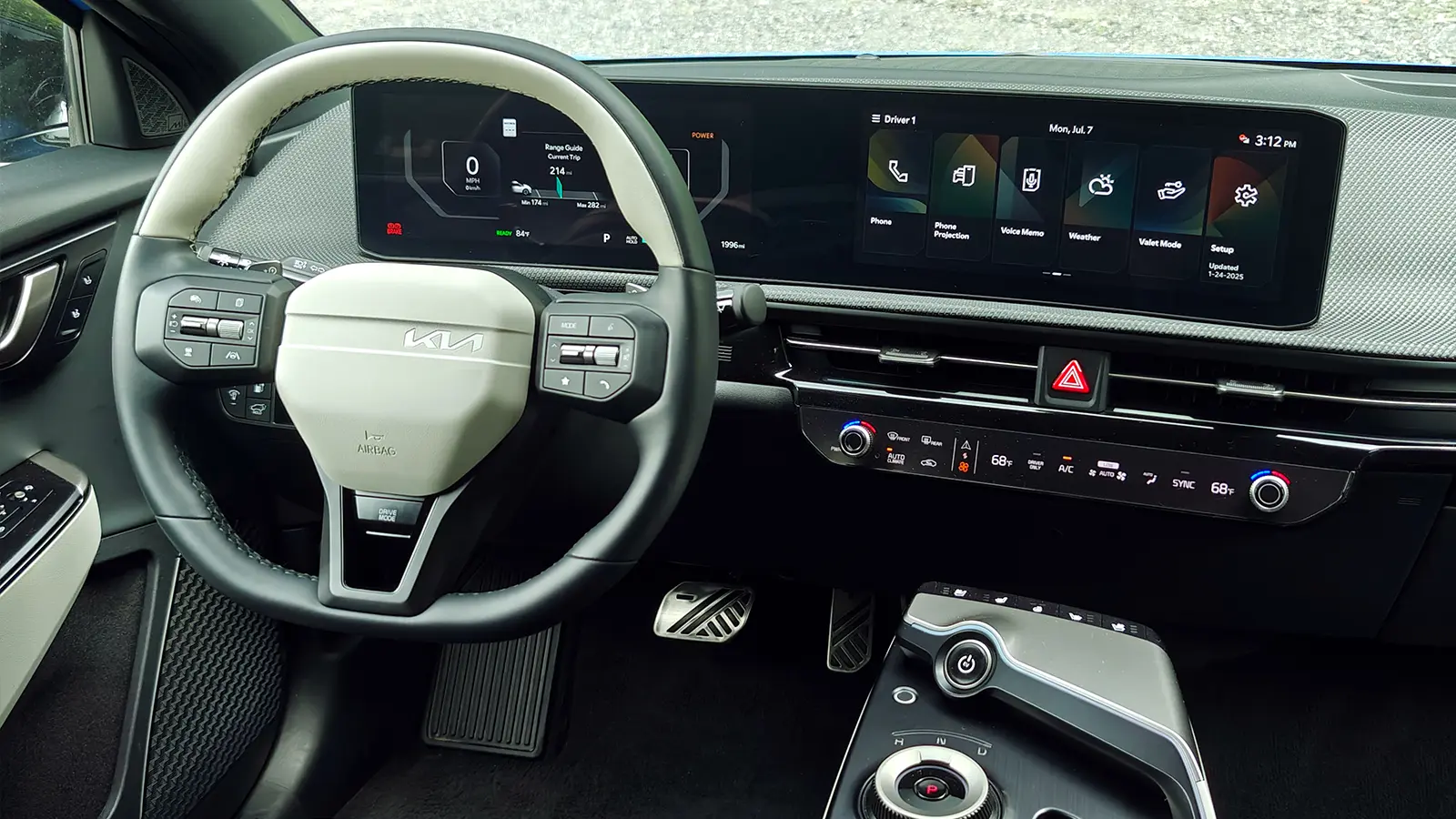
Feature Packed but a Tight Fit
The GT-Line model I tested includes such notable goodies as a head’s-up display, heated and ventilated seats (including rear heaters), a power liftgate, and a sunroof. The GT-Line also includes an upgraded stereo and a surround-view camera system. All versions come with dual 12.3-inch screens and wireless Android Auto and Apple CarPlay.
Visually, the interior of the EV6 presents well, and the GT-Line’s sportier seat coverings are attractive and comfortable. Legroom is great front and rear, thanks to the Kia’s flat floor and extended wheelbase (longer than even the seemingly larger gas-powered Sorento SUV). Unfortunately, headroom is tight in the GT-Line, and the standard sunroof doesn't help.
My test car came with Kia Highway Driving Assist 2 which was quite good at keeping the EV6 between the lines on the highway, and it will even swap lanes for you if you initiate with the turn signal (and if the adjacent area is clear of traffic). It’s not a true hands-off driving system, so if you do take your hands off the wheel, it will periodically remind you to put them back on.
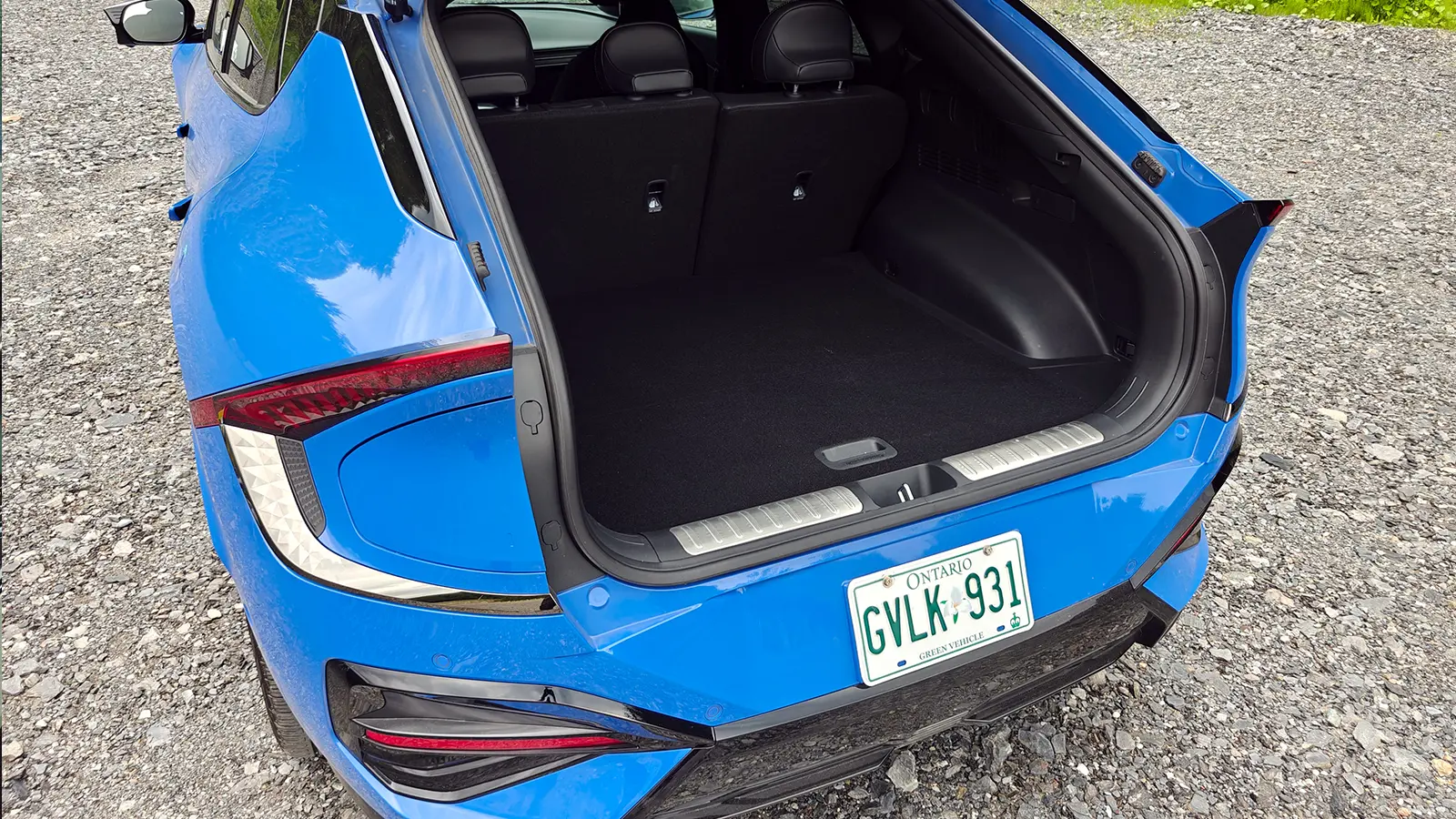
Limited Towing but Practical Cargo Space
You won’t be tugging all that much of a trailer behind the Kia EV6, which is limited to 2,700 pounds in models with the biggest battery. That’s better than in years past, but it’s still a few steps behind most gas-powered SUVs in the EV6’s price range.
Fortunately, interior storage is good, as the longer wheelbase makes up for the lower roof in the cargo department. About 47 cubic feet of total room is available with the rear row folded flat (and just over 24 cubic feet behind that back bench). You may be disappointed by the vehicle’s minuscule frunk, which carves out nearly enough space to pack a picnic lunch. However, it does provide a dedicated compartment that conveniently stores a charging cable and two adapters.
A Pleasing Road Trip Companion
Driving the GT, that 5-second sprint to 60 mph felt accurate, with the strongest surge of power from the dual-motor arriving in the initial moments of acceleration. Over the course of a hot summer week, I was able to match the EPA’s 270-mile range estimate, which was impressive given how often I used the air conditioning in the humid, scorching weather.
The EV6 isn’t a sporty SUV, regardless of what the GT-Line badge suggests. Still, it’s exceptionally competent in nearly every driving situation, and even when slotted through a series of corners at higher-than-average speeds, its handling never wavered. Almost no body lean was apparent, and it was also comfortable when bounding over gamey stretches of road that seemingly haven’t been paved since the Neolithic era. Overall, the EV6 delivers an excellent, long-legged grand touring experience with power to spare when it’s time to pass slower traffic.
A Stylish, Practical EV with Charging Convenience
The 2025 Kia EV6 MSRP starts at $44,375 MSRP for the Light RWD model. The Long Range version of the same trim bumps the price up to $47,675 MSRP and adding AWD pushes the price to $51,775. Wind trims range between $51,775 and $60,375 MSRPs, depending on configuration, while the high-performance GT tops out at $65,275 MSRP. All trim levels have a $1,475 destination fee.
While competitive with similar electric crossovers, federal tax incentives and dealer discounts may provide additional value.
🔋 More Electric SUVs to Explore
- 2024 Hyundai Ioniq 5 Review
Explore Hyundai’s groundbreaking Ioniq 5 with striking style and exceptional charging speed.
Read More ➜ - 2024 Ford Mustang Mach-E Road Test
Dive into Ford’s electric Mustang SUV, offering thrilling performance and impressive range.
Read More ➜ - 2024 Volkswagen ID.4 Review
Check out Volkswagen's practical ID.4 EV, blending family-friendly utility with great efficiency.
Read More ➜





